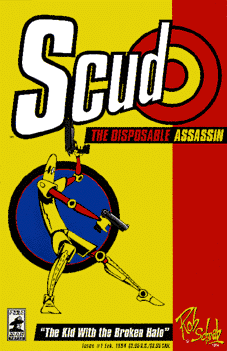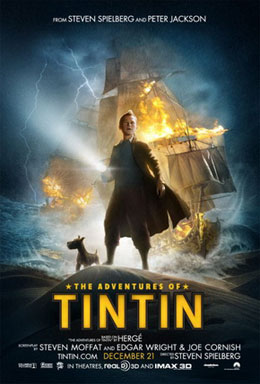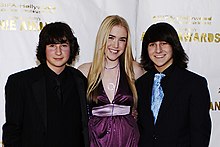
Who Framed Roger Rabbit is a 1988 American fantasy comedy film directed by Robert Zemeckis from a screenplay written by Jeffrey Price and Peter S. Seaman. It is loosely based on the 1981 novel Who Censored Roger Rabbit? by Gary K. Wolf. The film stars Bob Hoskins, Christopher Lloyd, Stubby Kaye, Joanna Cassidy, and the voices of Charles Fleischer and an uncredited Kathleen Turner. Combining live-action and animation, the film is set in an alternate history Hollywood in 1947, where humans and cartoon characters co-exist. Its plot follows Eddie Valiant, a private investigator with a grudge against toons, who must help exonerate Roger Rabbit, a toon framed for murder.
Modern animation in the United States from the late 1980s to the early 2000s is frequently referred to as the renaissance age of American animation. During this period, many large American entertainment companies reformed and reinvigorated their animation departments, following the dark age, and the United States had an overall profound effect on animation globally.

Robert Lee Zemeckis is an American filmmaker. He first came to public attention as the director of the action-adventure romantic comedy Romancing the Stone (1984), the science-fiction comedy Back to the Future trilogy (1985–1990), and the live-action/animated comedy Who Framed Roger Rabbit (1988). He subsequently directed the satirical black comedy Death Becomes Her (1992) and then diversified into more dramatic fare, including Forrest Gump (1994), for which he won the Academy Award for Best Director. The film also won the Best Picture.

Scud: The Disposable Assassin is a humorous, hyperkinetic science fiction comic by Rob Schrab about a world in which one can buy robot assassins out of vending machines, the most popular of which are intelligent robots that kill a specified target and then self-destruct.

Channel 101 is a non-profit monthly short film festival in Los Angeles, which has a sister festival in New York City, Channel 101 NY. Channel 101 is a creation of Dan Harmon and Rob Schrab in which participants submit a short film in the format of a pilot under five minutes in length. The event is structured such that a panel of previously successful submitters choose what pilots are shown, and a live audience at The Downtown Independent decides which pilots continue as a series for the next screening in much the same way TV programs are rated and managed. According to the Channel 101 website, "Channel 101 is a chance to sit in the worn-out chair of the fat network exec, drunk on the blood of lowly artists whose right to exist is given in exchange for their ability to nourish... You run the network. You pick the programming."

Robby Christopher Schrab is an American comic book creator, screenwriter, director, and producer. He is the creator of the comic book Scud: The Disposable Assassin, co-writer of the feature film Monster House, co-creator of the competitive film festival Channel 101, and the co-creator of Comedy Central's The Sarah Silverman Program. He has directed three seasons of The Sarah Silverman Program and episodes of Childrens Hospital, Blue Mountain State, Community, Parks and Recreation, The Mindy Project, Workaholics, Creepshow, and the second revival season of Mystery Science Theater 3000.

ImageMovers (IM), is an American production company which produces CGI animation, motion-capture, live-action films and television shows. The company is known for producing such films as Cast Away (2000), What Lies Beneath (2000), The Polar Express (2004), Monster House (2006), and Beowulf (2007). From 2007 to 2011, The Walt Disney Company and ImageMovers founded a joint venture animation facility known as ImageMovers Digital which produced two motion-captured CGI-animated films: A Christmas Carol (2009) and Mars Needs Moms (2011) for Walt Disney Pictures, neither of which were financially successful.

Beowulf is a 2007 American adult animated fantasy action film produced and directed by Robert Zemeckis, written by Neil Gaiman and Roger Avary, based on the Old English epic poem Beowulf, and featuring the voices of Ray Winstone, Anthony Hopkins, Robin Wright Penn, Brendan Gleeson, John Malkovich, Crispin Glover, Alison Lohman, and Angelina Jolie. The film depicts the rise and fall of the warrior Beowulf after he travels to Denmark to kill a monster. It was produced by Shangri-La Entertainment and Zemeckis's ImageMovers and features characters animated using motion-capture animation, which was previously used in The Polar Express (2004) and Monster House (2006).

Sony Pictures Imageworks Inc. is a Canadian visual effects and computer animation studio headquartered in Vancouver, British Columbia and Montreal, Quebec, with an additional office on the Sony Pictures Studios lot in Culver City, California. SPI is a unit of Sony Pictures Entertainment's Motion Picture Group.

Daniel James "Dan" Harmon is an American screenwriter and producer. He is best known as the creator and producer of the NBC and Yahoo! Screen sitcom Community (2009–2015), creator and host of the comedy podcast Harmontown (2012–2019), co-creator of the Adult Swim animated sitcom Rick and Morty (2013–present) and its subsequent franchise along with Justin Roiland, and co-founder of the alternative television network and website Channel 101 along with Rob Schrab.
Douglas Pipes is an American film score composer whose feature films include the Academy Award-nominated Monster House, the horror film Trick 'r Treat, and the Christmas comedy-horror film Krampus. His brassy instrumentations have drawn comparisons to action-music composer guru Alan Silvestri and his other orchestral-music composer counterparts Michael Giacchino, J.A.C. Redford and Joel McNeely. His chance encounter with Gil Kenan at UCLA California made him the perfect composer for this soundtrack and composed the music on his short film The Lark.

Gil Kenan is a British–American filmmaker. He is best known for directing the films Monster House (2006) and Ghostbusters: Frozen Empire (2024), which the latter was nominated for the Academy Award for Best Animated Feature.

Monster House is a third-person shooter survival horror video game developed by Artificial Mind and Movement and published by THQ. The game is based on the 2006 animated film of the same name. The game was met with mixed reception.

The ceremony for the 34th Annual Annie Awards, honoring the best in animation in 2006, was held on February 11, 2007, at the Alex Theatre in Glendale, California.

The Adventures of Tintin is a 2011 animated epic action-adventure film based on Hergé's comic book series of the same name. It was directed by Steven Spielberg, who produced the film with Peter Jackson and Kathleen Kennedy. Steven Moffat, Edgar Wright, and Joe Cornish wrote the screenplay for the film. It stars Jamie Bell as Tintin, Andy Serkis, and Daniel Craig. In the film, Tintin, Snowy, and Captain Haddock (Serkis) searches for the treasure of the Unicorn, a ship once captained by Haddock's ancestor Sir Francis Haddock, but they face dangerous pursuit by Ivan Ivanovitch Sakharine (Craig), who is the descendant of Sir Francis's nemesis Red Rackham.

Waking Sleeping Beauty is a 2009 American documentary film directed by Disney film producer Don Hahn and produced by Hahn and former Disney executive Peter Schneider. The film documents the history of Walt Disney Feature Animation from 1984 to 1994, covering the rise of a period referred to as the Disney Renaissance.
DreamWorks Pictures is an American film studio and distribution label of Amblin Partners. It was originally founded on October 12, 1994, as a live-action film studio by Steven Spielberg, Jeffrey Katzenberg, and David Geffen, of which they owned 72%. The studio formerly distributed its own and third-party films. It has produced or distributed more than ten films with box-office grosses of more than $100 million each.

Hotel Transylvania is an American media franchise created by Todd Durham and owned by Sony Pictures Entertainment. It consists of four feature films, three short films, an animated television series, and several video games.

Hotel Transylvania 3: Summer Vacation is a 2018 American animated monster comedy film produced by Sony Pictures Animation and distributed by Sony Pictures Releasing. It is the third installment in the Hotel Transylvania franchise and the sequel to Hotel Transylvania 2 (2015), it was directed by Genndy Tartakovsky, written by Tartakovsky and Michael McCullers, and features Adam Sandler, Andy Samberg, Selena Gomez, Kevin James, Fran Drescher, Steve Buscemi, Molly Shannon, Sadie Sandler, David Spade, Keegan-Michael Key, Asher Blinkoff and Mel Brooks reprising their roles, with new additions to the cast including Jim Gaffigan, Kathryn Hahn, Joe Jonas, Chrissy Teigen, Joe Whyte, Tara Strong and Tartakovsky, while Chris Parnell, who voiced The Fly in the first two films, voices Stan. In the film, Dracula finds love with a ship captain named Ericka while he embarks on a vacation on a luxury cruise liner with his family and friends, but Mavis later discovers that Ericka is actually the great-granddaughter of Abraham Van Helsing, Drac's arch-nemesis who secretly plan to destroy them.
The following is a list of unproduced Robert Zemeckis projects in roughly chronological order. During his long career, American film director Robert Zemeckis has worked on several projects which never progressed beyond the pre-production stage. Some of these projects fell in development hell, were officially cancelled, were in development limbo or would see life under a different production team.

















